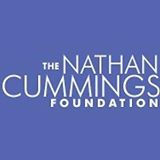Childhood Obesity: Variations in Management
Childhood obesity has been described as a growing national epidemic. Between 1980 and 1994 the prevalence of childhood obesity doubled with 10% to 15% of children and adolescents being obese. Childhood obesity has both immediate and long-term detrimental consequences for health and well-being. Obese children are at increased risk for coronary heart disease, type 2 diabetes, and hypertension. Obese children are more likely to be at risk for psychological stress and disturbed body image. Moreover, obese children are more likely to become obese adults, especially if weight reduction has not occurred by the end of adolescence.
The pediatrician is in an ideal position to assess and manage childhood obesity. Recently, guidelines have been established for the assessment and treatment of childhood obesity. These "best practice" guidelines include recommended diagnostic criteria, assessment of contributing factors such as diet and lifestyle, family history, and treatment choices. Although these guidelines have been introduced little is known about pediatricians' actual practice patterns and their beliefs concerning childhood obesity.
Project Description I plan to conduct a national survey of pediatricians to assess common strategies for the identification and management of childhood obesity, along with pediatricians' attitudes and beliefs about childhood obesity. In consultation with a panel of practicing general pediatricians and survey research experts, I plan to develop a survey that measures pediatricians' beliefs about the causes and consequences of childhood obesity, its prevalence in their practice settings, their approaches to diagnosis and management, and resources available for treatment. The survey will be administered to a randomly selected national sample of approximately 600 practicing general pediatricians. The response rate is expected to be approximately 60% or 360 pediatricians. The survey results will help to assess the degree to which recommended practice guidelines are being implemented, identify pediatricians' beliefs and attitudes that might serve as barriers to optimal care, and suggest areas for continuing medical education. The proposed time frame for the study is two years.
100 项与 The Nathan Cummings Foundation 相关的临床结果
0 项与 The Nathan Cummings Foundation 相关的专利(医药)
1995-12-01·Conservation Biology
Education in the Real World
100 项与 The Nathan Cummings Foundation 相关的药物交易
100 项与 The Nathan Cummings Foundation 相关的转化医学








